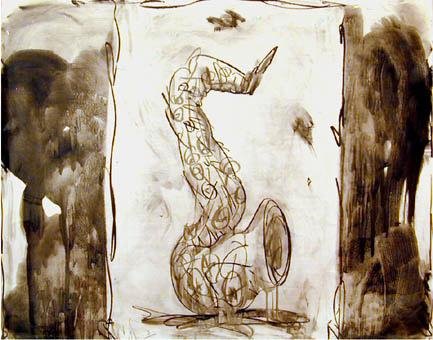The Artist’s Reality: Mark Rothko
Has art lost faith in itself? Can pictures be miraculous anymore? A revelation? Mark Rothko thought so. Rigidly uncompromising, deeply philosophic, and blessed with a gift for sustained concentration, Mark Rothko (1903-1970) was one of the major figures of Abstract Expressionism. And yet, he argued that his pictures were not abstract at all, but instead, had a most important subject: human experience. Rothko’s aim was to make painting itself into an experience of tragedy and ecstasy. “My art is not abstract” he said, “it lives and breathes.” Appropriately, Andrew Forge once said, “When I first saw Rothko’s work, I felt I had fallen into a dream.”
Rothko thought pictures needed to be miraculous, and he didn’t think he needed stories to connect us to human tragedy. He thought it could be done with a completely new visual language. Rothko did not represent space. He created it. His colors are his performers: glowing, burning and floating. They don’t just absorb light, but rather, emit light. They feel like they’re moving off the wall, that they are somehow animated, and coming to get us. They are fetal in the sense that they are becoming, growing, and expanding, like germ cells.
Obsessed with the relationship between his pictures and his audience, Rothko saw the viewing experience as a marriage of minds. The viewer completes his pictures. There are incredibly funny stories of Rothko sneaking around Janis Gallery turning down the gallery lights whenever Sidney Janis wasn’t looking, who of course, when returning, would turn the lights back up again, wondering why it was so dark. Rothko thought his pictures already had their own illumination.
Rothko felt that modern society no longer recognized the urgency for the transcendent experience. For the archaic artist, however, this transcendental urgency was not only understood, but given official status. Like a modern day shaman, he felt it his duty to reconnect us to our primordial roots. Standing in front of an actual Rothko in person, the work has a strange, unseen presence. They invite your gaze to go beyond the canvas. They are an invitation, for us, the viewer, to share in a vision, to have one for ourselves. Divining instruments.
For Rothko, the artist’s most important tool was his faith. Faith in his ability to produce miracles when needed. Faith in the power of a work of art to express his most important feelings. Many of the religious functions of our culture may have been deinstitutionalized and marginalized today, but they have not vanished. We still need our gods and monsters.
Near to his death, Rothko would donate his famous Seagram’s murals to the Tate Gallery in London, in part because he was such an admirer of J.M.W. Turner’s work down the hall, and liked the idea of having the right company. His work is the logical conclusion to a long history and tradition of artists seeking to push the visual image to its absolute limits, in the quest to represent vision.
Has the art of today actually lost faith in itself? Perhaps it has. More importantly though, perhaps it has also lost the strength to dream. Like Sisyphus, some artists seem to have gotten tired of rolling that boulder up the hill all over again. In this new “barbarian age” as Anton Ehrenzweig called it, cool cynicism and unbelief are now the vogue. Maybe Donald Kuspit is right, and “The End of Art” is not when art is no longer any good, but rather, when the artist doesn’t even bother to try anymore. Carl Andre epitomized this hip indifference when he proclaimed he was trying to “unexpress” himself. As critic Robert Hughes brilliantly quipped: if someone puts a Rodin sculpture in a parking lot by accident, it’s still a Rodin, it’s just in a parking lot. But if someone takes Andre’s work out of the museum and puts it into the parking lot, it’s just a pile of bricks. As Richard Appignanesi writes of the limitations and disappointments of postmodern art - when we’ve finally run out of everything to believe in, “the only cure for Postmodernism is the incurable illness of Romanticism.”
The Romantic artist is startled at how enormous and beautiful the universe is. He is compelled to make others see it as he sees it. And the poet is a man or woman who expands the usual limits of vision. Visionary artists like Tiffany, Turner, Blake, Kandinsky and Rothko remind us that we are not merely able to see the world – but also able to alter our perception of it. Man has a Will to See. His perceptions can be adjusted like the range on a telescope. We can remember our dreams, and dream without sleeping. As The Serpent in Shaw’s Back to Methusaleh tells Eve in The Garden of Eden:
You and Adam see things and say, Why? But I dream things that never were, and I say ‘Why not?’
Eve realizes that for all the originative creative workers like herself: artists, musicians and the like: “When they come, there is always some new wonder, or some new hope; something to live for. They never want to die because they are always learning, and always creating.” Before Eve bites into The Apple, The Serpent reminds her:
“Every dream can be willed into creation by those strong enough to believe in it.” •
Wednesday, July 7, 2010
Subscribe to:
Post Comments (Atom)













No comments:
Post a Comment